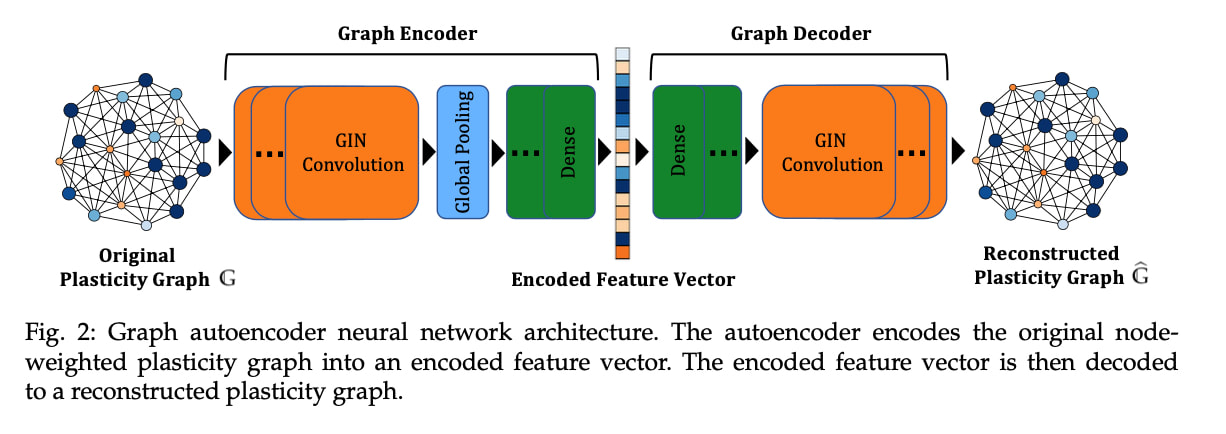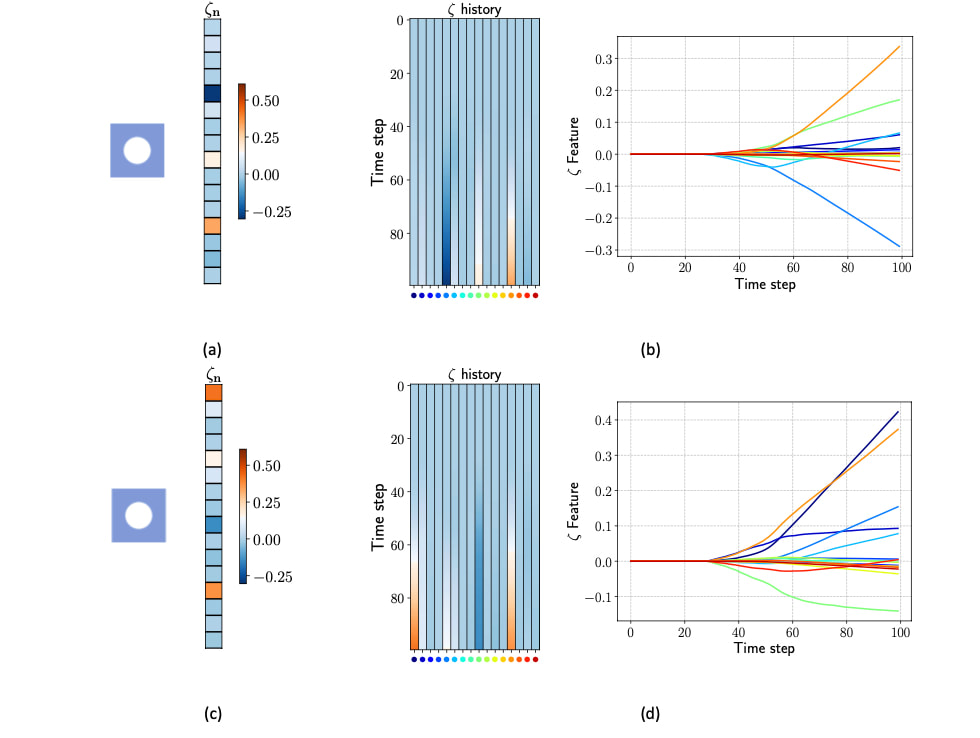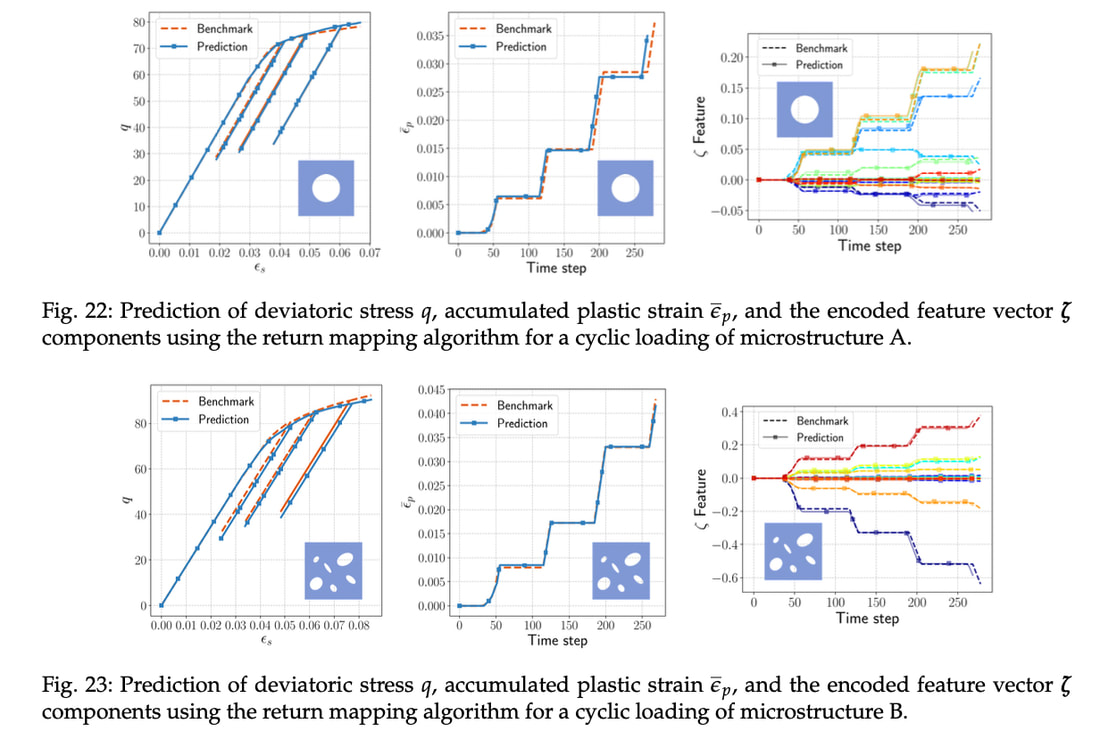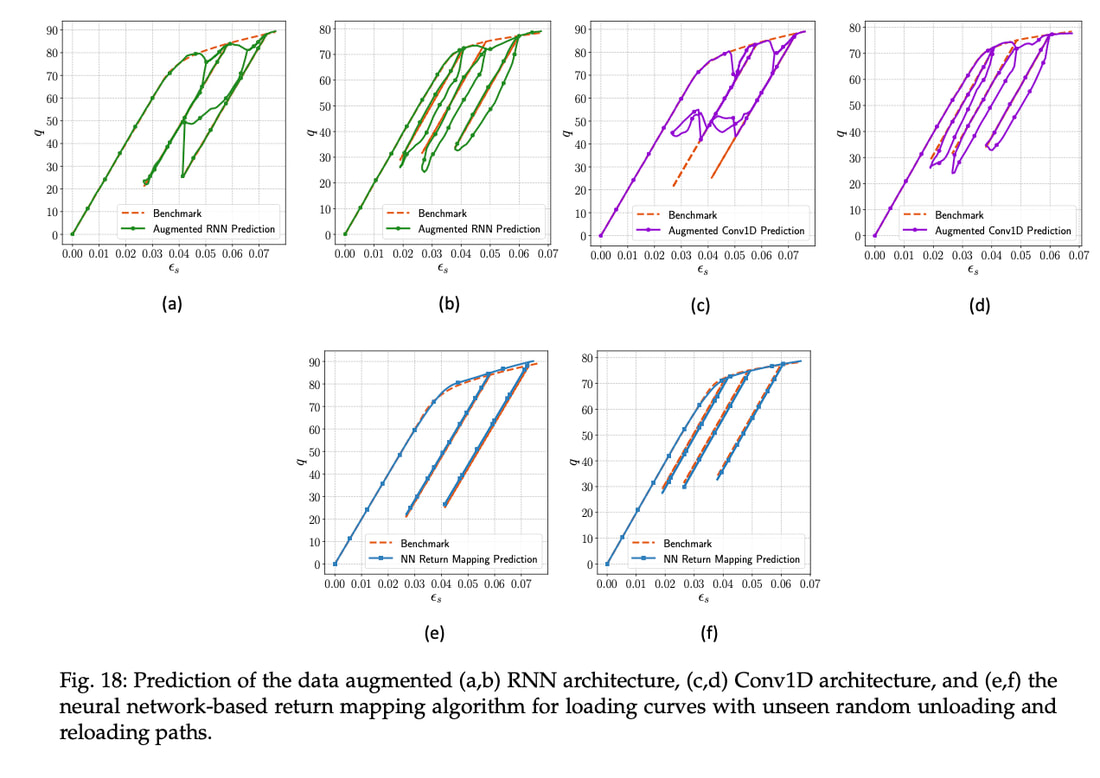|
Generally speaking, reduced order modeling and constitutive modeling are considered different disciplines. In Part II of our research on geometric learning for computational Mechanics (see Part I here), we attempt to conduct these two very different ideas by using a graph isomorphism network to learn the low-dimensional representation of finite element solutions of microstructures. Then, instead of reconstructing the low-dimensional dynamics directly via a black-box approach, we use the macroscopic plasticity theory to create additional constraints (e.g., yield function consistency, plastic flow direction) such that the low-dimensional dynamics can be compatible with the macroscopic observations. On the other hand, the autoencoder of the graph isomorphism network also gives us a chance to recast the element of the latent space as the internal variables of the plasticity model and therefore gives more direct and interpretable relations between microstructural deformation patterns and macroscopic plasticity. Our results also indicate that the geometric learning approach may enable us to more explicitly understand the geometry of the data manifested by the shape of the yield function as a function of both stress and elements of latent space of plastic deformation of RVE. This understanding, in return, gives us the opportunity to recast the reduced order modeling problem that can be updated via a classical constitutive law that is now with internal variables that can b be encoded as a snapshot of finite element mesh. The resultant models is found to perform robustly in forward predictions with loading paths different from the training data, in thew sense that there is no spurious patterns that might exhibit in RNN or 1D convolutional NN (see below).
Preprint posted at ResearchGate here. Part III of this series is under progress and will submit soon.
0 Comments
Leave a Reply. |
Group NewsNews about Computational Poromechanics lab at Columbia University. Categories
All
Archives
July 2023
|





 RSS Feed
RSS Feed